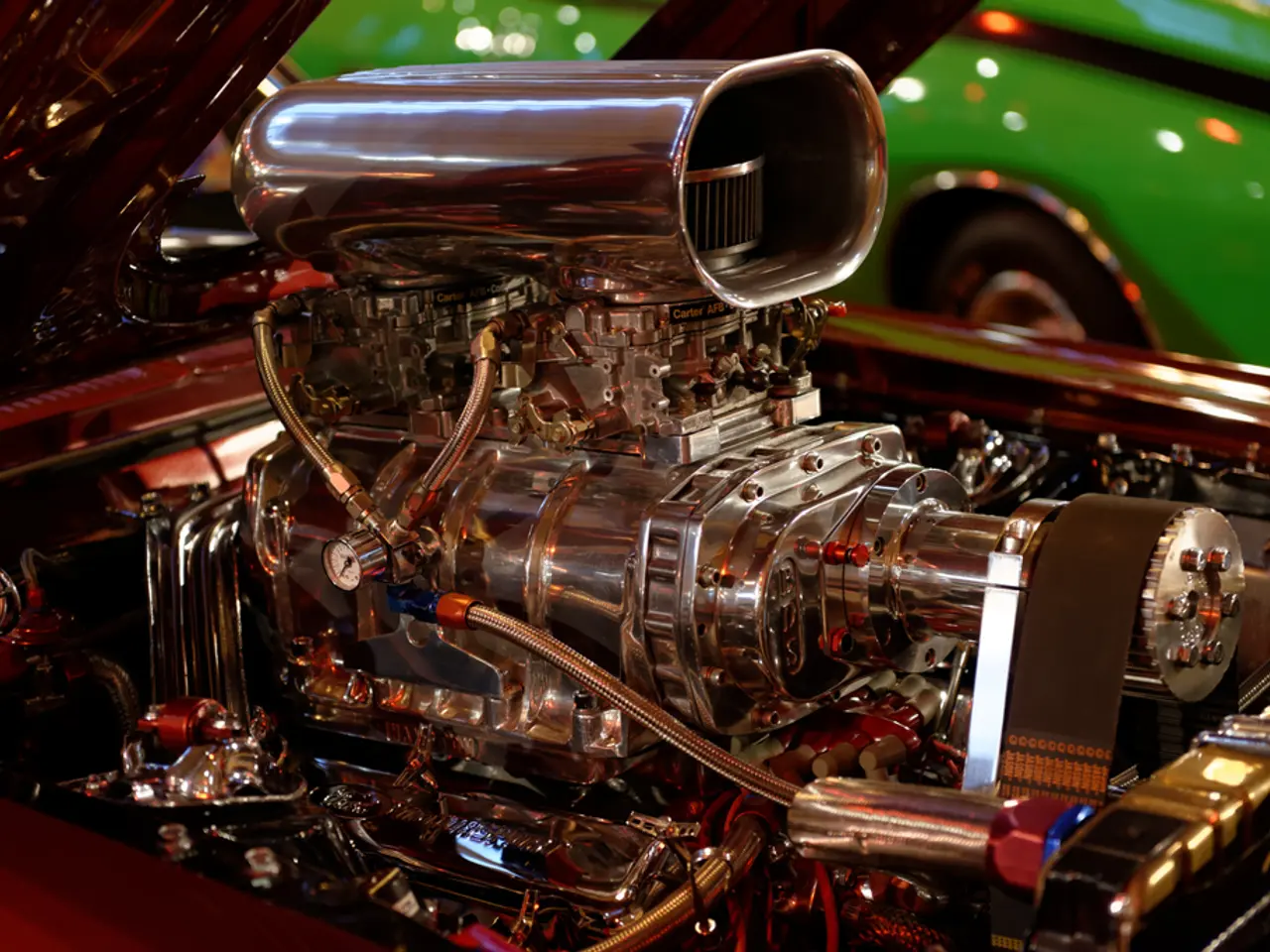Exploring Essential Components of a Car Engine
In the heart of every vehicle lies a complex system known as the car engine, a marvel of modern engineering designed to transform fuel energy into usable mechanical energy, propelling the vehicle forward efficiently. Here's a breakdown of the key components and how they work together to generate power.
### Key Components of a Car Engine
1. **Engine Block**: The foundation of the engine, typically made from cast iron or aluminum, houses the cylinders or combustion chambers where fuel combustion occurs.
2. **Cylinders and Pistons**: Pistons move up and down inside the cylinders. The combustion of fuel-air mixture creates an explosion that forces the piston downward, converting chemical energy into linear mechanical motion.
3. **Crankshaft**: Connected to the pistons via the connecting rods, the crankshaft converts the pistons' linear motion into the rotational motion needed to turn the vehicle's wheels.
4. **Camshaft**: A rotating shaft synchronized with the crankshaft, the camshaft controls the timing of the valves (intake and exhaust), ensuring air-fuel mixture enters and exhaust gases exit the combustion chamber at precise moments.
5. **Valves (Intake and Exhaust)**: Intake valves open to let the air-fuel mixture into the cylinders, while exhaust valves open to expel burnt gases after combustion. Their operation is tightly timed by the camshaft to maintain engine efficiency and power output.
6. **Timing Chain or Belt**: Connects the crankshaft to the camshaft to synchronize their movements and valve timing with piston motion.
7. **Additional Components**: The starter motor helps initiate engine operation, the alternator supplies electrical power once the engine is running, and the fuel pump, carburetor/injectors manage fuel delivery.
### How They Work Together to Generate Power
Fuel mixed with air enters the cylinders via the intake valves. The piston compresses this mixture as it moves upward. The spark plug ignites the mixture, causing combustion and forcing the piston downward. This linear motion pushes the connecting rods, which rotate the crankshaft. The crankshaft’s rotation is transferred through the transmission and drivetrain to the wheels, moving the vehicle. The camshaft, driven by the crankshaft via the timing chain or belt, opens and closes the intake and exhaust valves in exact synchrony with piston movements. Exhaust gases are expelled through the exhaust valves, making room for the next intake cycle. This continuous cycle of intake, compression, combustion, and exhaust sustains engine power.
In essence, the engine is the heart of the car—a complex system where combustion inside cylinders drives pistons connected to a crankshaft, with valves controlled by a camshaft regulating airflow, all working in perfect harmony to generate the power needed for vehicle propulsion.
### Additional Engine Components
- The head gasket, positioned between the engine block and cylinder head, prevents oil or coolant leaks and maintains a secure seal between these two major engine components. - The cylinder head, positioned atop the engine block, covers the cylinders and houses crucial components such as valves, springs, and camshafts. - Each cylinder head contains intake and exhaust valves, which allow the air-fuel mixture into the cylinder during the intake stroke and expel combustion gases during the exhaust stroke. - The camshaft is connected to the crankshaft by a timing belt or chain, synchronizing valve movement with the engine's piston strokes. - The head gasket separates the combustion chamber from the engine block, ensuring that each cylinder operates independently and maintains optimal pressure during the combustion process. - The camshaft, located within the cylinder head, operates the engine's valves by rotating and exerting pressure on valve lifters or followers. - Regular inspection and maintenance of the cylinder head and gasket are crucial to prevent leaks or failures that can compromise engine performance. - The camshaft's rotation determines the timing of valve operation, which is crucial for optimal engine performance. - The cylinder head forms a sealed chamber where combustion occurs, ensuring that the air-fuel mixture remains contained within each cylinder during the combustion process.
Some engines employ Variable Valve Timing (VVT) technology, allowing the adjustment of valve timing for improved efficiency and performance under various operating conditions. This technology further enhances the engine's ability to adapt to different driving scenarios, making vehicles more fuel-efficient and powerful.
- The wisdom accumulated in the design of car engines, such as the industry's mastery of modern engineering principles, has revolutionized the automotive field.
- A well-tuned car engine combines the efficiency of a properly timed fuel-air mixture with the power output from the ignition system, contributing to an enjoyable lifestyle on the road.
- In the realm of finance, maintaining a well-maintained car engine can prevent costly repairs while preserving the vehicle's resale value, ultimately ensuring a sound financial investment.
- As technology evolves, advancements in transportation continue to play a significant role in self-development and learning, making us more efficient, responsible, and environmentally conscious drivers.
- The increasing sophistication of automotive engines, integrating technology like Variable Valve Timing, has broadened our understanding and appreciation of the engineering complexities that drive our modern way of life.




